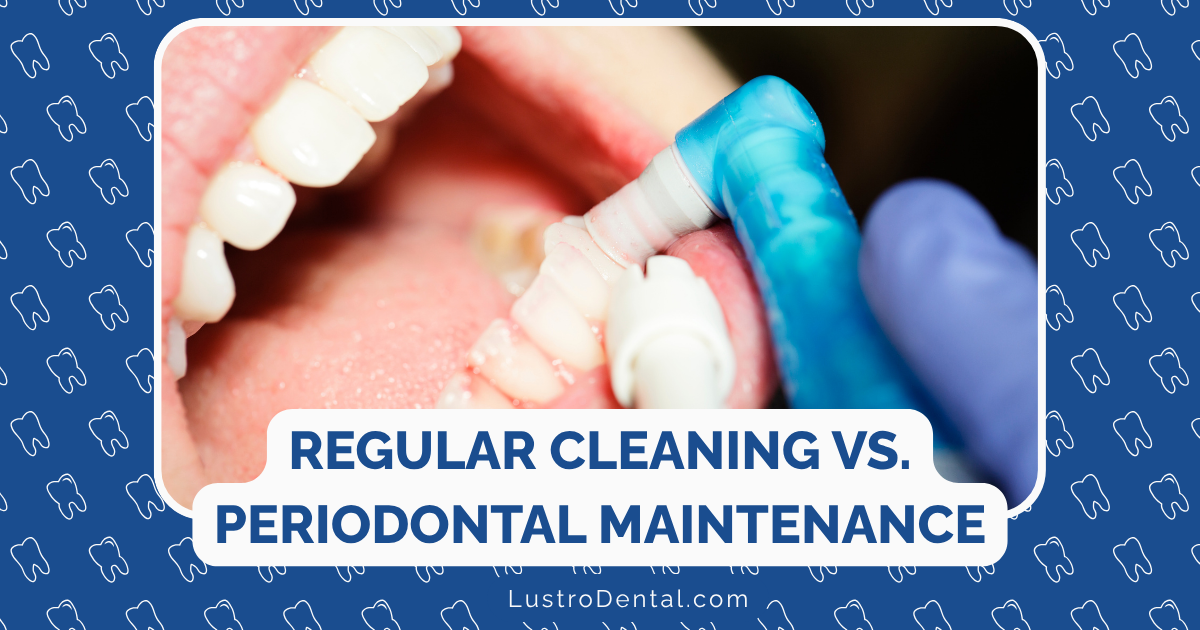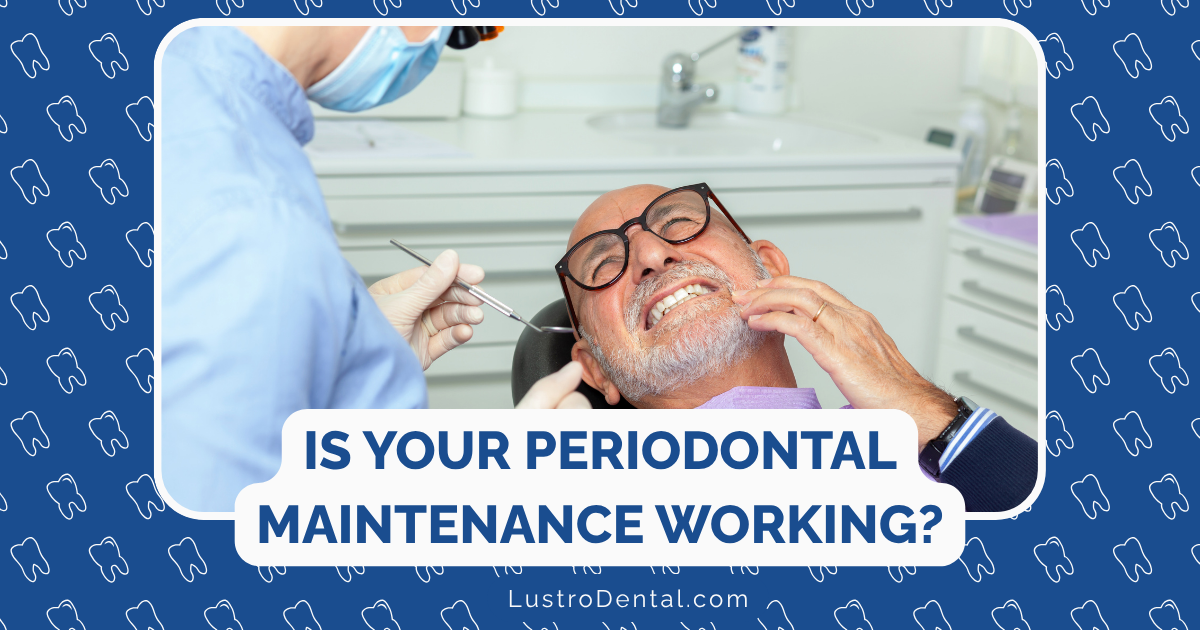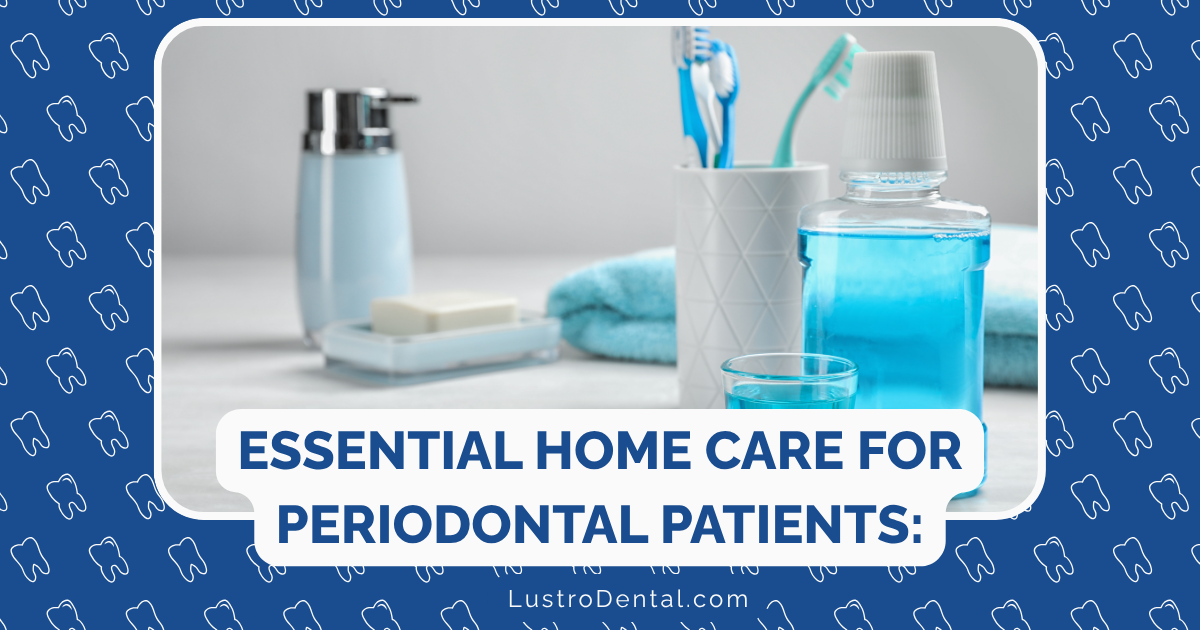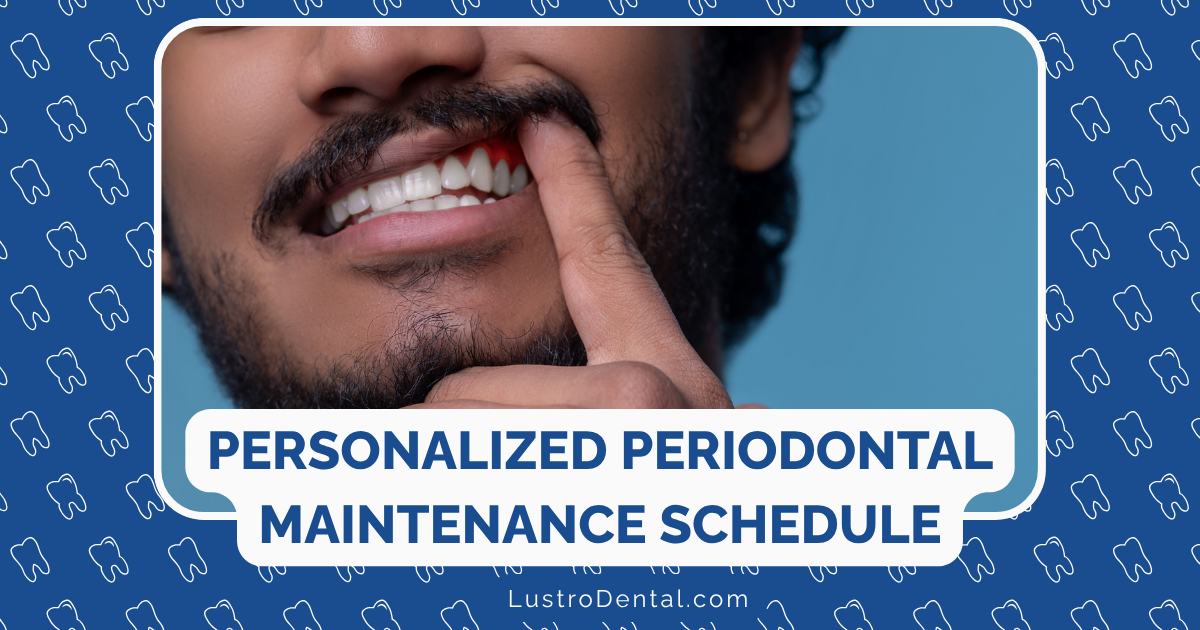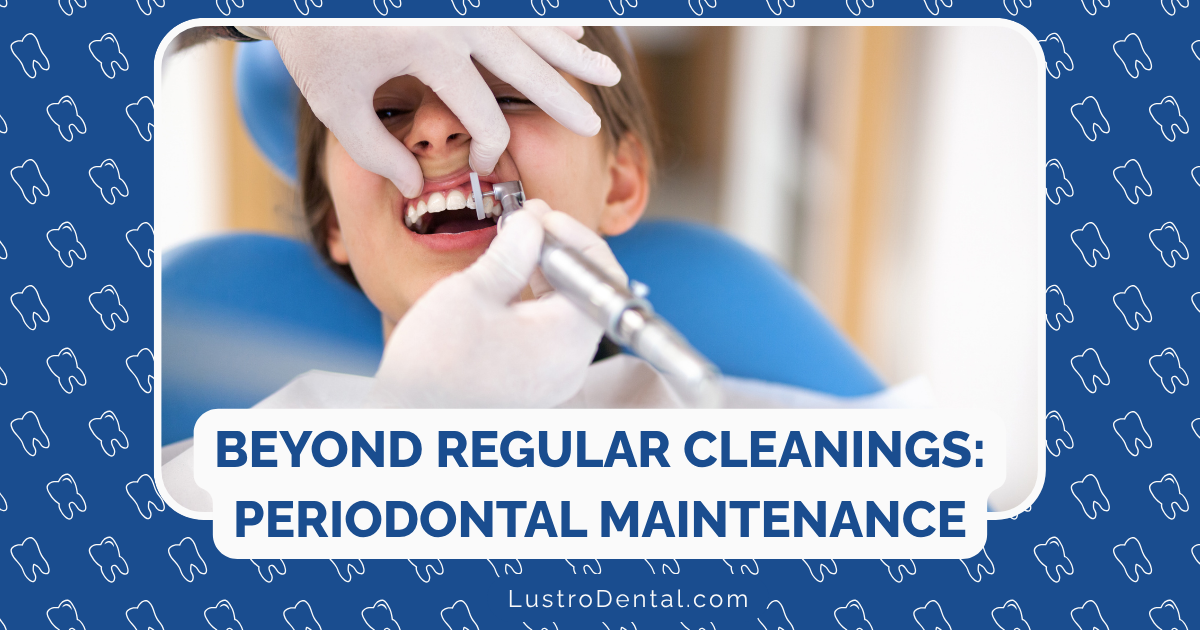Professional Treatments for Stubborn Gingivitis: Options Beyond Regular Cleanings
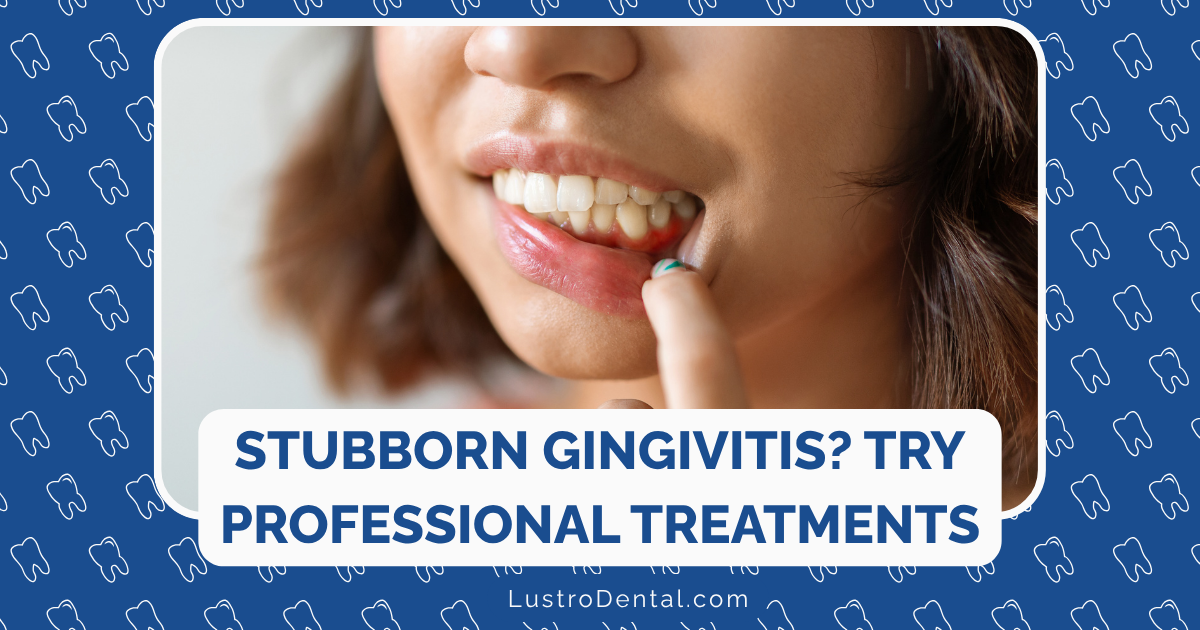
When patients come to me with persistent red, swollen gums that bleed despite their best home care efforts, they’re often frustrated and concerned. While gingivitis is the earliest stage of gum disease and typically responds well to regular professional cleanings and improved home care, some cases prove stubborn and require more advanced interventions.
According to the American Academy of Periodontology, nearly half of American adults over 30 have some form of periodontal disease, with many experiencing persistent gingivitis that doesn’t fully resolve with standard treatments. If you’re dealing with stubborn gingivitis that hasn’t responded to regular dental cleanings, several professional treatment options can help restore your gum health before the condition progresses to more serious periodontitis.
In this article, I’ll explore the advanced professional treatments available for persistent gingivitis, explaining how they work, their effectiveness, and what you can expect during and after these procedures.
Why Some Cases of Gingivitis Don’t Respond to Regular Cleanings
Before diving into treatment options, it’s helpful to understand why some cases of gingivitis persist despite regular professional cleanings and good home care:
1. Biofilm Resistance
Some oral bacteria form particularly stubborn biofilms that are resistant to standard cleaning methods. These biofilms can adhere tightly to tooth surfaces and gum tissues, making them difficult to remove completely.
2. Anatomical Factors
Certain anatomical features, such as deep gingival crevices, crowded teeth, or dental restorations with imperfect margins, can create areas that are difficult to clean effectively, allowing bacterial biofilms to persist.
3. Systemic Factors
Conditions like diabetes, autoimmune disorders, or certain medications can affect your body’s immune response, making it harder to combat gingival inflammation even with good oral hygiene.
4. Genetic Predisposition
Research has shown that genetic factors can influence your susceptibility to gingivitis and how your body responds to standard treatments. Some individuals are simply more prone to gingival inflammation due to their genetic makeup.
Professional Treatments for Stubborn Gingivitis
When regular cleanings aren’t enough, dental professionals have several advanced treatment options at their disposal:
1. Scaling and Root Planing (Deep Cleaning)
While you may have had regular cleanings, scaling and root planing is a more intensive procedure specifically designed to address persistent gingivitis and early periodontitis.
What it involves: This non-surgical procedure goes beyond a standard cleaning by thoroughly removing plaque and tartar from above and below the gumline. The tooth roots are then smoothed (planed) to remove bacterial toxins and create a clean surface that discourages future plaque accumulation.
Effectiveness: According to the American Academy of Periodontology, scaling and root planing can reduce pocket depth by 0.5-2mm and is often sufficient to resolve stubborn cases of gingivitis without the need for more invasive procedures.
What to expect: The procedure is typically performed under local anesthesia to ensure comfort. It may be completed in one appointment or divided into quadrants with multiple appointments. Some sensitivity and minor discomfort are normal for a few days afterward.
2. Antimicrobial Therapy
For cases where bacterial infection is a significant factor, antimicrobial treatments can be used to target the harmful bacteria causing gingivitis.
Professional-Strength Antimicrobial Mouthwashes
What it involves: Your dentist may prescribe a professional-strength antimicrobial mouthwash, most commonly containing chlorhexidine gluconate (0.12% to 0.2%).
Effectiveness: According to a comprehensive review published in PMC, a daily rinse with 0.2% chlorhexidine mouthwash for 4 to 6 weeks can significantly reduce clinical signs of gingivitis, particularly when mechanical cleaning is challenging.
What to expect: You’ll typically use the prescription mouthwash twice daily for 2-4 weeks. Be aware that chlorhexidine can cause temporary tooth staining and taste alterations, but these effects resolve after discontinuing use.
Local Antibiotic Delivery
For more targeted treatment, antibiotics can be applied directly to affected areas.
What it involves: Products like PerioChip (2.5mg chlorhexidine gluconate) or Arestin (1mg minocycline hydrochloride) are placed directly into periodontal pockets after cleaning.
Effectiveness: A clinical study comparing these treatments found that both were effective at reducing plaque and gingival scores. Arestin showed better results at 6 weeks, while PerioChip demonstrated better outcomes at 3 months regarding probing depth reduction.
What to expect: The application is painless and takes just a few minutes. The medication is released slowly over 7-14 days, providing extended antimicrobial action. No special care is needed, though you should follow your dentist’s instructions regarding brushing and flossing around treated areas.
3. Laser Therapy
Dental lasers have emerged as an effective treatment option for stubborn gingivitis, offering precision and promoting healing.
What it involves: Different types of lasers (diode, Nd:YAG, Er:YAG) can be used to target and remove infected gum tissue while preserving healthy tissue. The laser energy also kills bacteria and stimulates healing.
Effectiveness: According to a 2025 review published in PMC, laser therapy has shown clinical efficacy as an adjunct to non-surgical periodontal treatment, improving clinical outcomes and patient experiences. Studies indicate that laser therapy can lead to significant improvements in clinical periodontal parameters, including reductions in probing pocket depth and gains in clinical attachment level.
What to expect: The procedure is minimally invasive and typically causes little to no discomfort. Treatment time varies depending on the extent of the gingivitis but usually takes 1-2 hours per quadrant. Most patients return to normal activities within 24-48 hours, and healing time is often shorter than with traditional treatments.
Long-term results: Research indicates that 98% of patients who receive laser periodontal therapy show no further disease progression after five years, compared to just a 5% stability rate with traditional gum surgery.
4. Photodynamic Therapy (PDT)
This innovative approach combines light activation with photosensitizing agents to target bacteria.
What it involves: A photosensitizing agent (typically a blue dye like methylene blue or toluidine blue) is applied to the affected gum tissues. The area is then exposed to a specific wavelength of light, which activates the agent and produces reactive oxygen species that kill bacteria.
Effectiveness: According to a systematic review in Frontiers in Microbiology, antimicrobial photodynamic therapy (aPDT) has shown effectiveness against key periodontal pathogens. Clinical studies demonstrate that combining aPDT with scaling and root planing results in significant clinical improvements, including gains in clinical attachment level and reductions in probing pocket depth.
What to expect: The procedure is painless and typically takes 30-60 minutes. There’s no downtime, and you can resume normal activities immediately. Multiple sessions may be recommended for optimal results.
5. Guided Biofilm Therapy (GBT)
This systematic approach to biofilm management combines several technologies for comprehensive treatment.
What it involves: GBT typically includes:
- Disclosing solution to visualize biofilm
- AIRFLOW® technology (air polishing with fine powder) to remove biofilm
- PERIOFLOW® for deeper pocket cleaning
- Ultrasonic and hand instrumentation as needed
- Quality control checks with redisclosing
Effectiveness: While relatively new, clinical studies show that GBT is effective at removing biofilm while being gentler on tooth and gum tissues than traditional methods. It’s particularly useful for patients with stubborn gingivitis related to biofilm resistance.
What to expect: Treatment is generally comfortable and efficient, typically taking 45-60 minutes. The approach is minimally invasive, and patients often report less sensitivity compared to traditional cleaning methods.
6. Ozone Therapy
Ozone therapy utilizes the antimicrobial properties of ozone gas to combat gingival inflammation and infection.
What it involves: Ozone can be applied in several forms:
- Ozonated water for irrigation
- Ozone gas directly to the tissues
- Ozonated oils for topical application
Effectiveness: According to a 2024 review in Springer, ozone therapy has shown promising results in periodontal applications. Research indicates that ozone therapy can effectively reduce plaque and gingival indices, with some studies showing results comparable to chlorhexidine treatment.
What to expect: The procedure is painless and quick, typically taking 5-15 minutes per session. Multiple sessions may be recommended, usually spaced 1-2 weeks apart. There are minimal side effects, making it suitable for patients who prefer natural treatment approaches.
Choosing the Right Treatment: Factors to Consider
Several factors influence which treatment might be most appropriate for your case of stubborn gingivitis:
1. Severity and Extent
The severity of your gingivitis and whether it’s localized to specific areas or generalized throughout your mouth will help determine the most appropriate treatment approach.
2. Underlying Causes
Identifying and addressing the underlying causes of your stubborn gingivitis is crucial for successful treatment. Your dental professional will consider factors like anatomical challenges, systemic conditions, and lifestyle factors.
3. Previous Treatments
Your response to previous treatments provides valuable information about what might work best for your specific case.
4. Personal Preferences
Your comfort level with different procedures, time constraints, and budget considerations all play a role in treatment selection.
5. Medical History
Certain medical conditions or medications may make some treatments more suitable than others.
What to Expect After Treatment
Short-term Recovery
Regardless of which treatment you receive, you can generally expect:
- Some degree of gum sensitivity for 1-7 days
- Possible minor swelling or redness that resolves within a few days
- Specific aftercare instructions to optimize healing
Long-term Maintenance
To maintain the results of your treatment:
- Follow a meticulous home care routine as recommended by your dental professional
- Attend regular follow-up appointments to monitor your gum health
- Address any signs of recurring gingivitis promptly
- Manage any underlying systemic conditions that may contribute to gum inflammation
Case Study: Successful Treatment of Stubborn Gingivitis
To illustrate how these advanced treatments work in practice, consider the case of Maria, a 42-year-old patient with persistent gingivitis despite regular cleanings and good home care:
Maria had been experiencing red, bleeding gums for over a year. Despite brushing twice daily, flossing, and having professional cleanings every six months, her symptoms persisted. Her dentist noted that she had several risk factors: a genetic predisposition to gum inflammation, crowded lower front teeth that made cleaning difficult, and a high-stress job that affected her immune response.
After discussing treatment options, Maria opted for a combination approach:
- Scaling and root planing to thoroughly clean below the gumline
- Local delivery of minocycline (Arestin) in the areas with the deepest pockets
- A two-week course of chlorhexidine mouthwash
- A modified home care routine including an electric toothbrush and interdental brushes
Three months after treatment, Maria’s gum inflammation had resolved completely. Her gums were pink and firm, with no bleeding during brushing or flossing. She continues to maintain her results with diligent home care and professional cleanings every four months instead of six.
When to Consider Referral to a Periodontist
While many cases of stubborn gingivitis can be managed by a general dentist, some situations warrant referral to a periodontist (gum specialist):
- Gingivitis that doesn’t respond to initial advanced treatments
- Signs of progression to periodontitis (deeper pockets, bone loss)
- Complicated medical history that may affect treatment outcomes
- Need for more specialized procedures not offered by your general dentist
Conclusion: Don’t Ignore Persistent Gingivitis
If you’re dealing with stubborn gingivitis that hasn’t responded to regular cleanings and home care, don’t despair—and more importantly, don’t ignore it. The advanced treatment options discussed in this article have shown excellent results for managing persistent gingival inflammation before it progresses to more serious periodontal disease.
Remember that gingivitis is the only reversible stage of gum disease. Once it advances to periodontitis, the damage to supporting bone and tissues becomes permanent. By addressing stubborn gingivitis promptly with these professional treatments, you can protect not just your gum health but your overall oral and systemic health for years to come.
Speak with your dental professional about which treatment options might be most appropriate for your specific case of stubborn gingivitis. With the right approach, you can achieve the healthy, pink gums that have eluded you despite your best efforts.
Have you experienced stubborn gingivitis that didn’t respond to regular cleanings? What treatments worked for you? Share your experience in the comments below.


